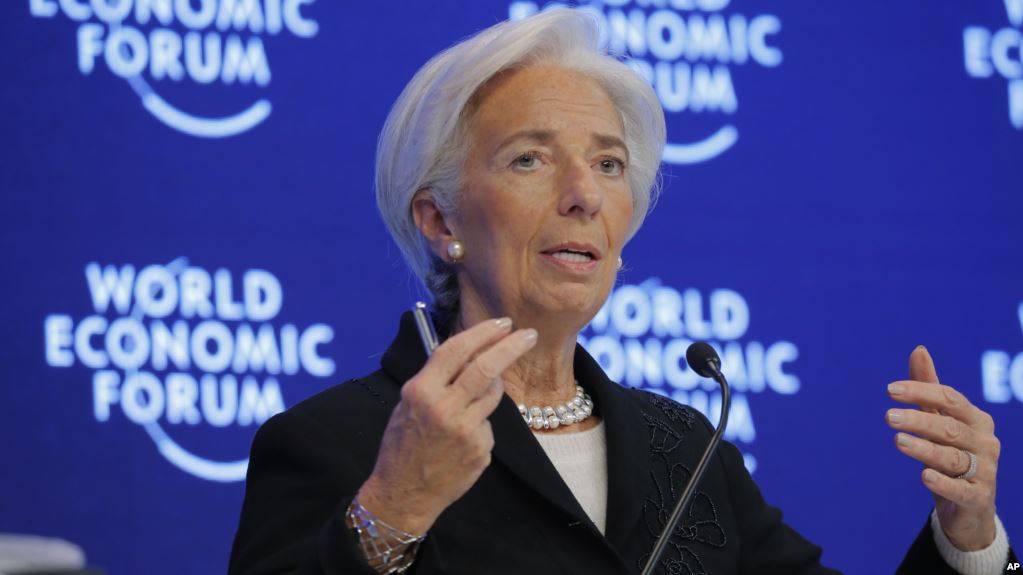
Christine Lagarde, Managing Director of the IMF, attends a session on the Economic Outlook on the fourth day of the annual meeting of the World Economic Forum in Davos, Switzerland, Jan. 20, 2017
The International Monetary Fund on Monday raised its forecasts for global economic growth in 2018 and 2019 to 3.9 percent, which would be the fastest pace since 2011. That is good for global equities, of course, but it is particularly bullish for crude oil prices and industrial metals prices. It also means that a wave of monetary tightening is coming to the global economy.
Positive surprises to euro-zone growth and solid data out of the U.S. have been supportive of the global economy, including growth in Asia. But the stronger growth globally weighed on the dollar last year, and will likely do so again in 2018 as emerging-market economies see stronger growth in the year ahead. This is especially true for commodity-focused economies, which are likely to benefit significantly from a global economy that appears by many measures to be firing on all cylinders.
One set of data that confirms the outlook for a strong year of growth in 2018 is the purchasing manager indexes for Europe, the U.S. and China. These are all above the key 50 mark, which is the dividing line between expansion and contraction, and are critical leading indicators of economic growth, and especially of oil prices and industrial metals.
As the global economy continues to expand, the demand for oil from the biggest net importer, China, is likely to accelerate. And manufacturing demand for metals will rise along with prices. There is the potential for higher prices across the spectrum of industrial commodities this year. From a technical standpoint, most industrial metals prices have been trading around a rising trendline. And with fundamentals likely to support prices, the trendline bears watching closely. Aluminum is an excellent example of this, but it is also true of copper, nickel and other industrial metals prices.
Oil prices have been on the rise, too. And that has everything to do with global and Chinese growth. Oil price weakness from the end of 2014 through 2016 was overly attributed to the shale oil revolution, but the truth is that China was in a manufacturing recession during that period. In light of recent global growth, oil prices recently closed above pre-Chinese recession levels not seen since the end of 2014. While shale oil presents some upper limits to oil prices due to flexibility of additional marginal supply, strong expansionary economic activity on a global scale is likely to keep crude oil prices supported. This kind of strong growth presents the potential for spikes sharply higher at times in the coming year, even from current levels.
Stronger global growth is also likely to support higher interest rates and tighter monetary policies. Never one to leave the party in completely good spirits, the IMF noted that rising debt loads across countries is a major risk, although the pace of the increase appears unlikely to end the expansionary economic cycle in 2018. These two factors together are likely to send bond yields higher globally.
One area where monetary tightening could surprise to the upside is the U.S. The IMF noted that U.S. tax cuts could give the economy a boost, but that the Fed could be forced to take more aggressive actions than currently expected, given the low levels of unemployment and the potential for more inflation. While this could prove true, the strong pace of growth expected in the next two years is likely to result in a number of surprises in monetary tightening beyond the U.S., such as in the euro zone. After all, the euro zone grew 0.8 percentage points more than expected in 2017, and the European Central Bank’s quantitative easing program is still underway.
Regardless of which central bank is at the top of the tightening list, 3.9 percent growth is likely to put a number of central banks on a path toward more hawkish policies in 2018.
Courtesy Bloomberg


